Murchison Minerals Intersects Extensive Sulphide Mineralization at BDF – pXRF Results Include 11.50 m Estimated at 2.13% Ni, 0.64% Cu, and 0.10% Co – Expands Zone of Mineralization
September 7th, 2022 (Burlington, Ontario): Murchison Minerals Ltd. (“Murchison” or the “Company”) (TSXV: MUR | OTCQB: MURMF) is pleased to announce results analysed using a portable x-ray fluorescence (pXRF) from the first diamond drillhole, at the Barre de Fer (“BDF”) zone, as part of the 2022 Summer Exploration Program on the 100% - owned HPM (Haut-Plateau de la Manicouagan) Project, located in Quebec.
The BDF zone, was the focus of the diamond drilling Phase of the 2022 summer exploration program, is a high-grade nickel, copper, cobalt zone with currently modelled dimensions of: strike length 315 m, width of 150 m and depth of 295 m. These preliminary results indicate the successful delineation of mineralization within the modeled zone of mineralization, as well as confirming extensive expansion beyond the current model.
Portable XRF (pXRF) analyzers determine the chemistry of a sample by measuring the fluorescent (or secondary) X-ray emitted from a sample when it is excited by a primary X-ray source. It should be noted that the results only provide an indication of the amount of Ni, Cu and Co present. Certified assaying of the core samples is still required to accurately determine the amount of mineralization (Nickel-Copper-Cobalt). The Company has implemented rigorous QA/QC procedures utilizing a direct rock sampler (Figure 6) to produce representative preliminary results (see pXRF Procedures and QA/QC below).
BDF22-001 Highlights
- pXRF results confirm the drill hole intersected zones of extensive high-grade Ni-Cu-Co sulphide mineralization
- The massive sulphide mineralization comprises pyrrhotite grains partially separated by loops of chalcopyrite and pentlandite.
- The hole successfully confirmed mineralization downdip from DH-2006, along with expanding mineralization outside of the currently modeled zone (Figures 1& 2)
- The hole, was drilled to a depth of 404 m, intersected four broad zones of Ni-Cu-Co sulphide bearing mineralization totalling 130.00 m of composite thickness (Table 1) including:
- 18.05 m estimated at 1.98% pXRF Ni Eq. (89.95 to 108.0 m) including 8.1 m at 3.45% pXRF Ni Eq.
- 69.90 m estimated at 0.68% pXRF Ni Eq. (267.0 to 336.90 m) including 16.1 m at 1.4% pXRF Ni Eq.
Table 1: BDF22-001 pXRF Results

Table 1: * Reported as core length, true thickness is not known.
**Nickel Equivalent (Ni Eq) values were calculated using the following USD metal prices from Sept 2, 2022: $9.18/lb Nickel, $3.42/lb Copper, and $23.57/lb Cobalt.
Table 2: Drill Hole Information

2022 Summer Diamond Drilling
During the 2022 summer exploration program, a total of 13 diamond drill holes were completed, comprising 4,316 metres. This includes ten drillholes at BDF, and an additional three holes at Syrah. The drill core is currently undergoing processing and pXRF results are being determined. Results will be released as soon as the data has been verified. The pXRF results from BDF22-001 demonstrate the expansion of the BDF zone, particularly below the current modeled mineralized zones.
The observed sulphide mineralization, in addition too the use of a Thermo Scientific direct rock sampler (DRS) and subsequent pXRF analysis has allowed Murchison to assess preliminary drilling results. Samples from BDF22-001 have been sent to the Saskatchewan Research Council’s Geoanalytical Laboratory for standard certified assaying.
The Company continues to progress towards completion of a maiden resource on BDF by early Q1of 2023.
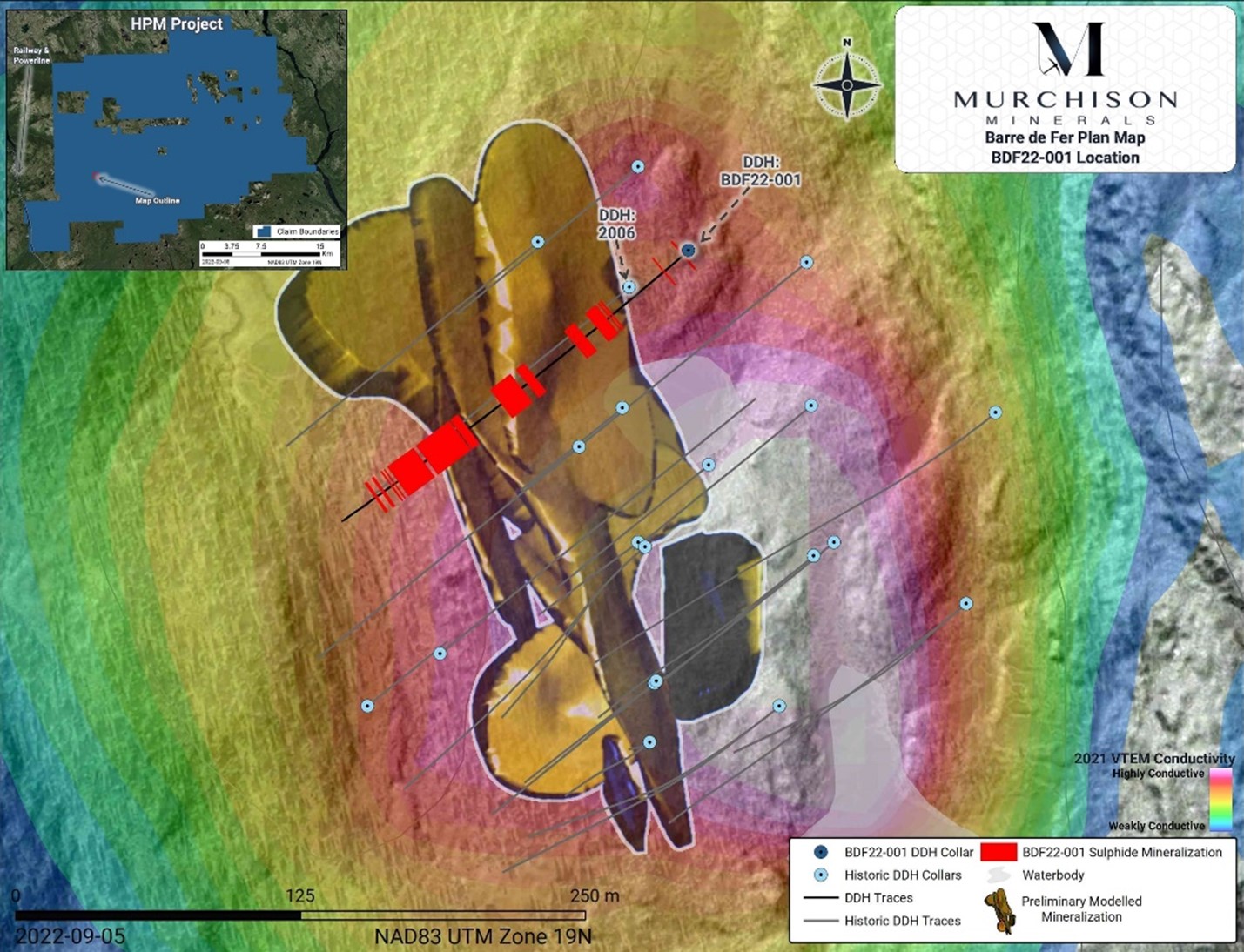
Figure 1: Location map of Barre de Fer, showing drill hole BDF22-001
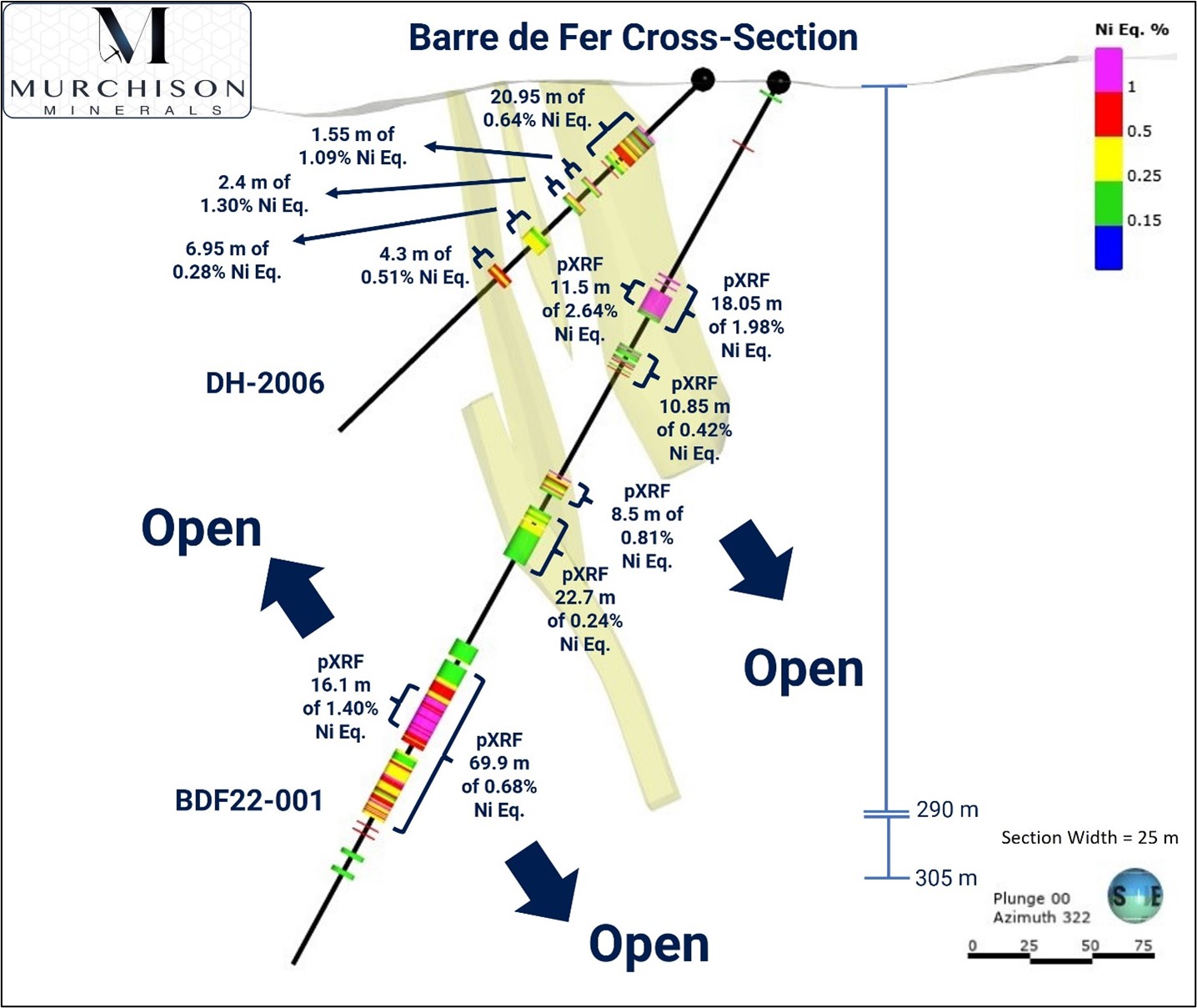
Figure 2: Barre de Fer Zone Cross-Section with Preliminary Nickel Mineralization Model and pXRF results from BDF22-001.
BDF22-001 Mineralization
The mineralization observed in BDF22-001 occurs within 5 separate zones. The upper intersection consists of multi-metre (Figure 3) massive sulphide mineralization. Subsequent zones of mineralization occur primarily as disseminated and stringer vein sulphides, over broad zones (tens of metres) with intermittent and localized zones of semi-massive to massive sulphide which range in scale from decimetre to metre.
The sulphide mineralization consists of pyrrhotite with observable pentlandite and chalcopyrite (Figure 4). The mineralization is variably hosted in a dark moderately serpentinized peridotite, olivine gabbronorites as well as a dark fine grained norite.

Figure 3: Massive sulphide mineralization in BDF22-001 at 97.80 m to 105.90 m.
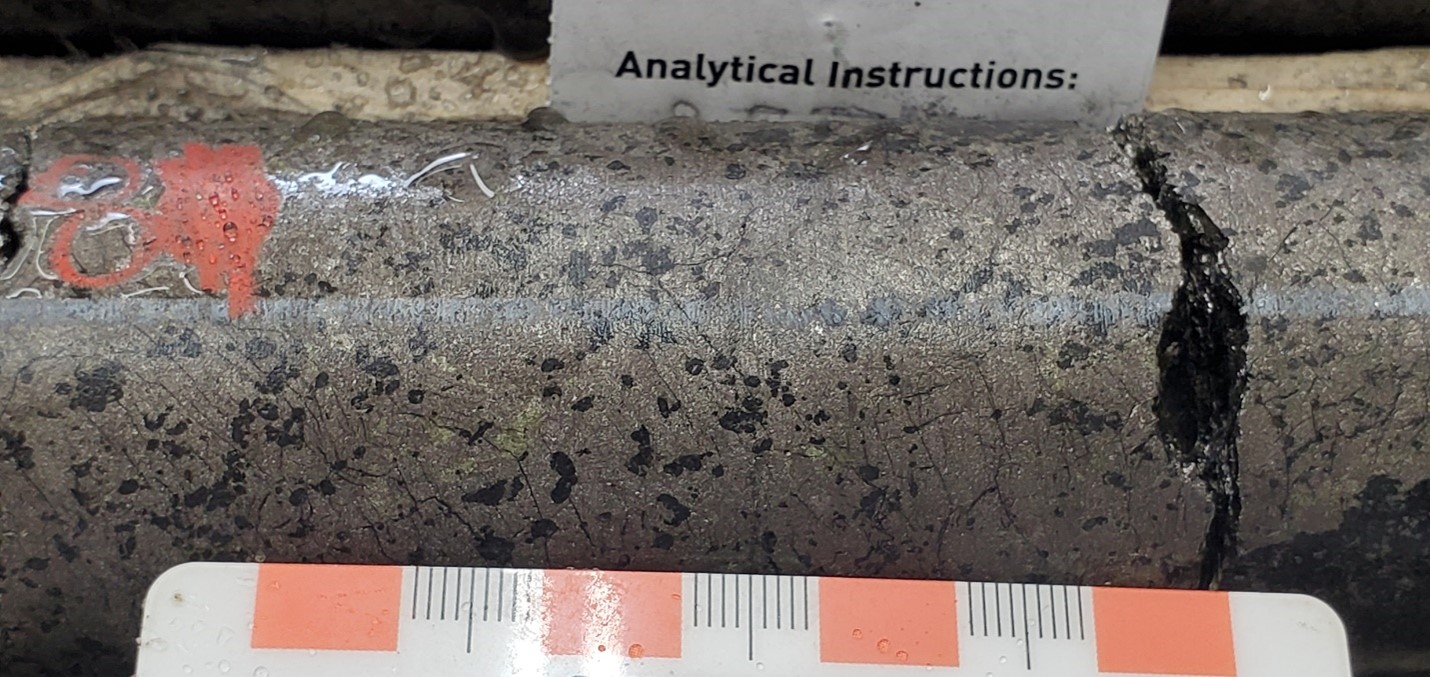
Figure 4: Zoom in on Massive Sulphide in BDF22-001 displaying observable pentlandite (nickel sulphide) and chalcopyrite (copper sulphide) with pyrrhotite (iron sulphide) mineralization.
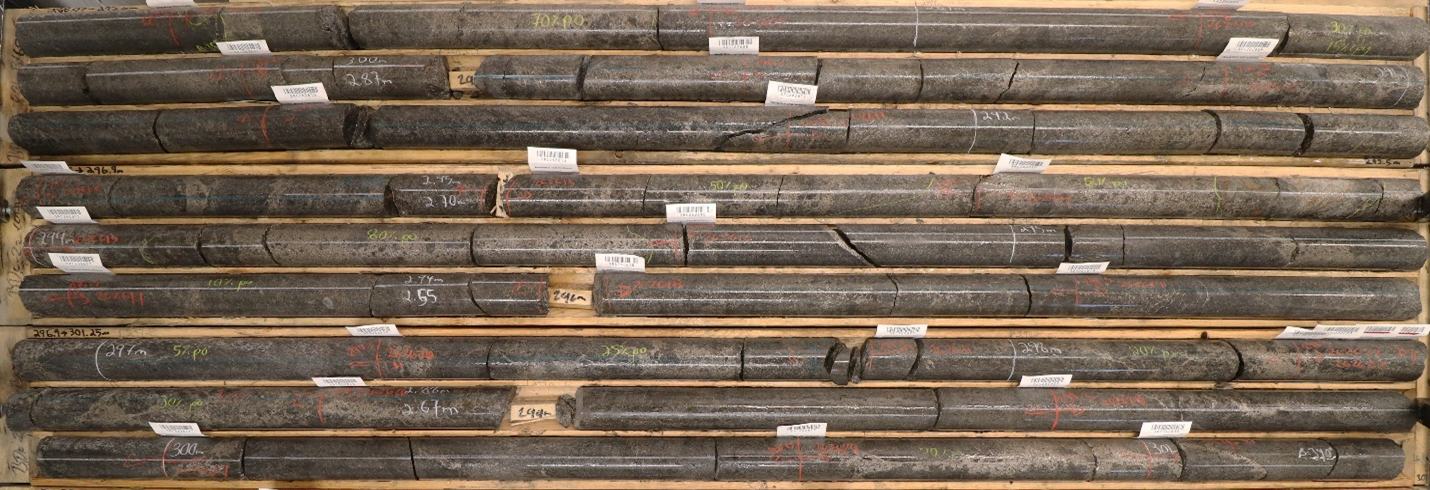
Figure 5: Semi-massive, stringer to disseminated mineralization observed in BDF22-001 at 288.07 m to 301.25 m.
”“Preliminary pXRF results from the first hole at Barre de Fer for the 2022 summer exploration program are extremely encouraging and highlight the potential for significant expansion of Ni-Cu-Co mineralization. The results demonstrate the processes Murchison has put in place for the 2022 program provide for the greatest opportunity to target the most prospective areas and expand Barre de Fer. The team is looking forward to the lab assay results and are working diligently to process the remaining drill core.”
Troy BoisjoliMurchison Minerals President and CEO
”“The pXRF results from BDF22-001 are very exciting and are a testament to the hard-work and due diligence the Murchison team has applied over the past several months in preparation for the 2022 summer exploration program. We are extremely excited to process the remaining drill core and incorporate the next batch of pXRF results into our working model of Barre de Fer.”
John ShmyrMurchison Minerals Vice-President of Exploration
pXRF Sample Procedures and QA/QC
Murchison has implemented a rigorous pXRF sampling and analysis procedure to support the estimation of Ni, Cu and Co concentrations.
In order to collect a homogenous sample, a direct rock sampler (DRS) was utilized for all samples (Figure 6). The DRS consists of a modified angler grinder utilizing a diamond blade in which the rock cuttings are collected within a plastic vial. Each assay sample that is to be submitted for ICP-OES total digestion and gold platinum palladium fire assay at a lab was sampled using the DRS. The DRS was used to channel the entire length of each sample with a single pass at a uniform depth of 3 mm and was cut without water. Each channel was cut parallel to core axis; adjacent DRS samples were cut along a uniform plane with consistent relative beta rotation angles to the orientation line, irrespective of the minerals to be intersected. The collected powder is pressed into a small puck with a very thin plastic film overtop and labelled with its unique identifying number. Between each sample all equipment was thoroughly cleaned to prevent cross-contamination. The sample pucks represent a continuous sample across the length of the mineralized intervals. The DRS channel sample collects a limited amount of material for analysis, as a result pXRF results may vary from total digestion ICP-OES and gold platinum palladium fire assay results for a number of factors, including but not limited to, variability due to nugget effect.
Each sample puck was analyzed using a Niton XL5 XRF analyzer mounted in a test stand. Each sample was analyzed for 90 seconds utilizing 3 element filters, each filter analyzing for 30 seconds. For every 10 samples analyzed, a standard was also analyzed consisting of certified reference material that was pressed into a sample puck. Five standards were utilized, and the analyzed standard was selected based on the relative nickel grade of the previous samples so as to analyze a standard with comparable grade. Multiple blank samples were also prepared by sampling barren quartz hand samples and pressing the material into sample pucks. Regular analysis of the blank material indicates minimal issues regarding sample contamination caused by the diamond blade. Each sample is thus assigned a pXRF Ni, Cu, and Co value which will then be superseded by lab quality assay results when they are received.
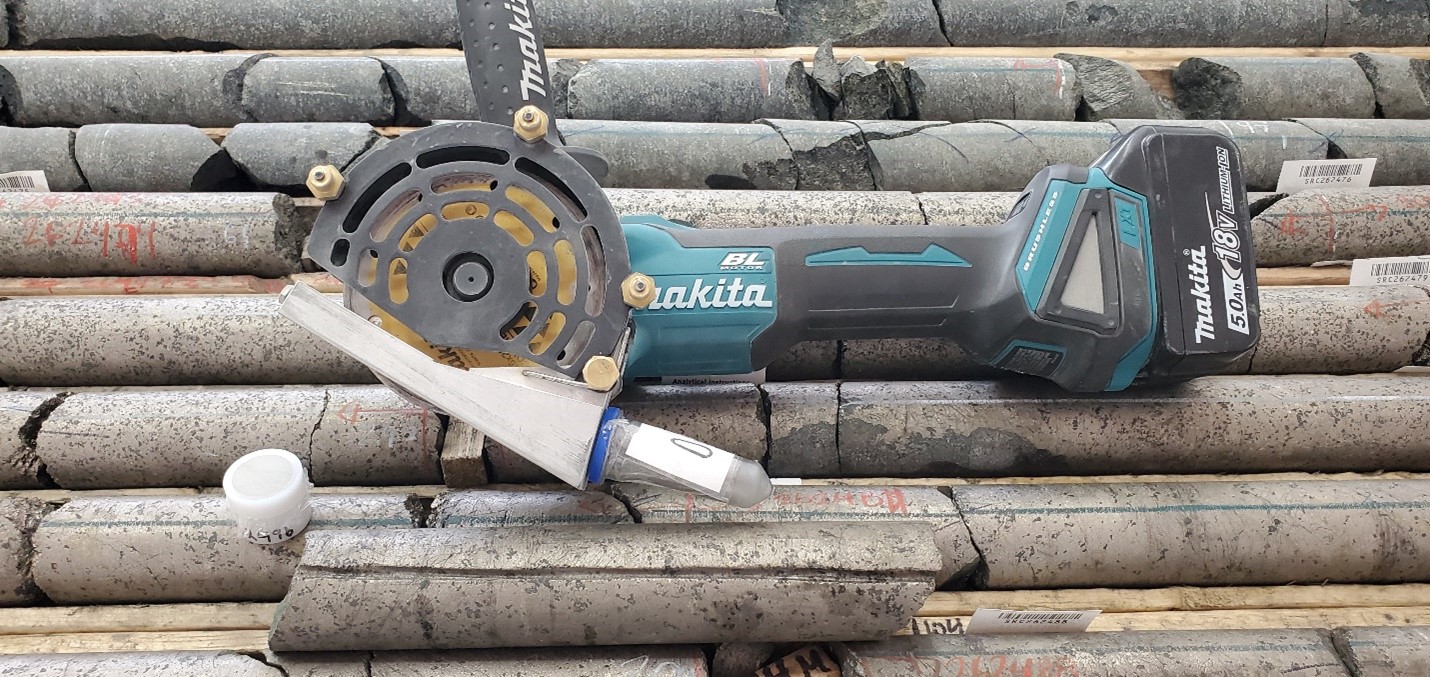
Figure 6: Direct rock sampler, sampled core and example sample puck from BDF22-001.
Table 3: Comparative Table of Average XRF Results vs Standards

Table 4: Example XRF analysis of Blank Material

About HPM Project
The HPM Project is located within the Haut-Plateau de la Manicouagan area, east of the Manicouagan structure, the site of a major 215 Ma impact event. The extensive reservoir at Manicouagan supports five hydro-power plants. The existing Quebec Cartier rail line, located eight kilometres west of the PYC target area, links Labrador City to Port Cartier and Sept Iles, two major iron ore port facilities.
The claims host prospective gabbroic, ultramafic and anorthositic bodies within the Manicouagan metamorphic complex and are associated with significant nickel-copper-cobalt sulphide mineralization first identified by Falconbridge in 1999, where they discovered extensive nickel-bearing sulphide mineralization at BDF during drilling in 2001 – 2002. Murchison Minerals Ltd.’s predecessor – Manicouagan Minerals – drilled in the area in 2008 and 2009. The majority of the past drilling at the HPM Project targeted the BDF geophysical conductor and confirmed the presence of nickel-copper-cobalt sulphide mineralization over approximately 300-metres strike length to a depth of 280 metres. The mineralization remains open at depth and partially along strike.
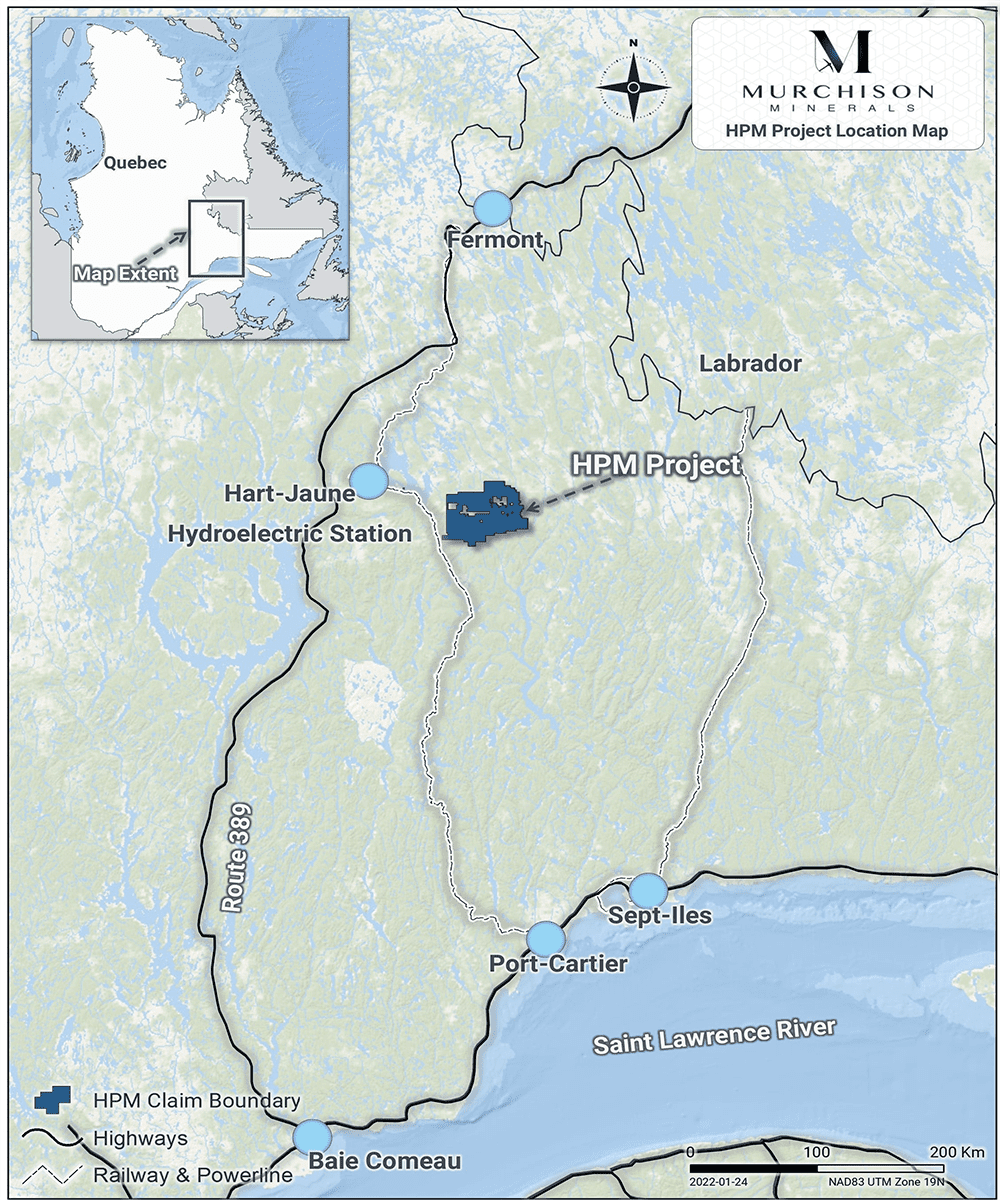
Figure 2: HPM Location Map.
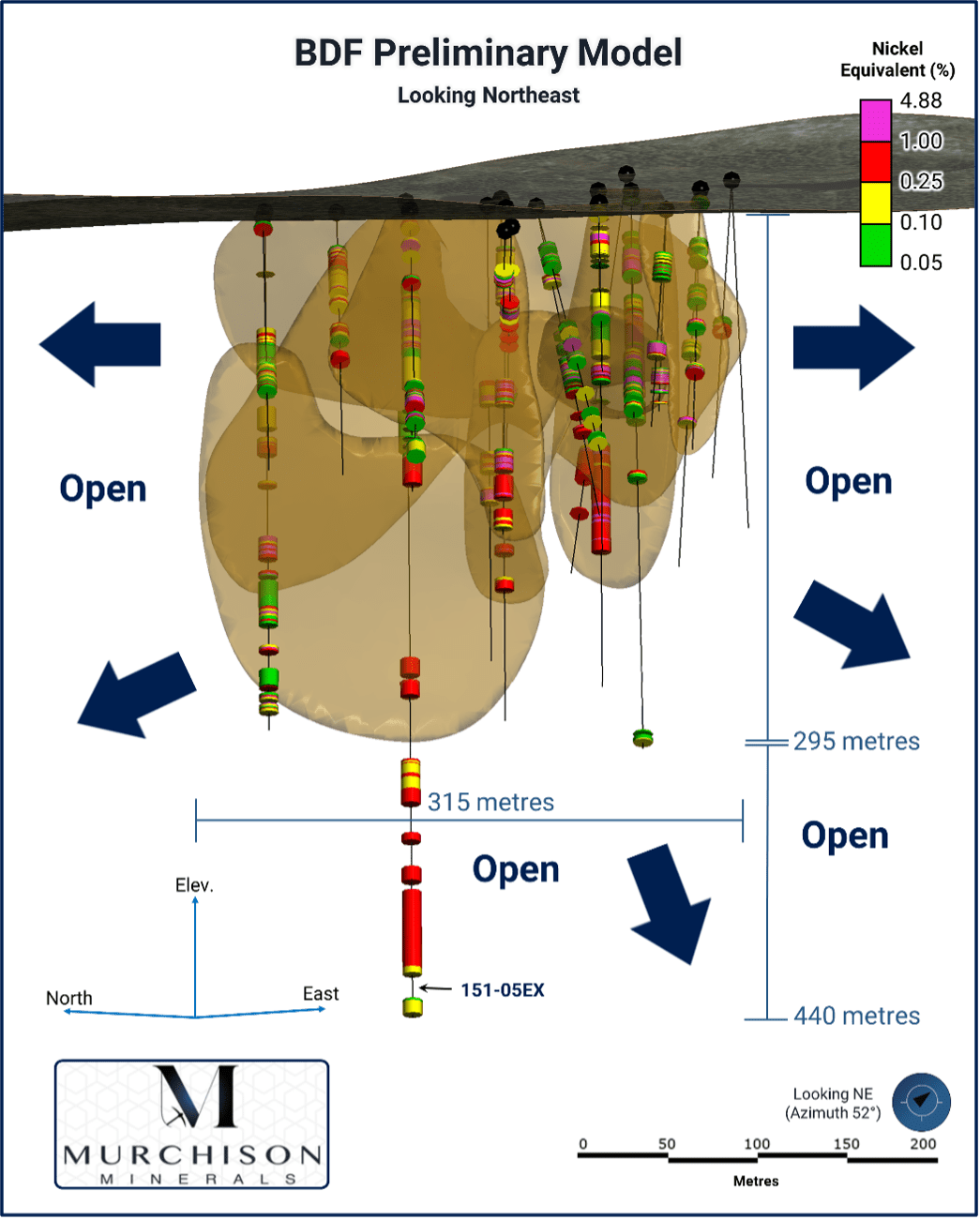
In March of 2022, the Company completed a comprehensive data compilation, verification and modelling program, comprising all previous drill hole data from the BDF Zone. The modelling program consisted of developing a preliminary 3D interpretation of nickel mineralization at BDF. Based on the modelling, the Zone outcrops on surface, extends to a vertical depth of 295 m, has a strike length of 315 m, and is composed of multiple stacked lenses over a maximum footprint width of 150 m. Individual lenses have a maximum thickness of 28 m. During the 2022 Summer Exploration Program, diamond drilling focused on the expansion and delineation of mineralization at BDF. Those results are currently being evaluated and the Preliminary model will be updated as results become available. No resource estimates have been completed on the Zone to date.
Figure 3: Barre de Fer Zone Preliminary Nickel Mineralization Model, isometric view looking Northeast.
((Nickel Equivalent (NiEq) values were calculated using the following USD metal prices from Mar 23, 2022: $12.76/lb Nickel, $4.76/lb Copper and $37.20/lb Cobalt.)
After Murchison acquired 100% ownership of the property in 2019, the Company focused exploration work on the camp-scale potential of the region. Aerial EM surveys completed in the spring of 2021 identified more than 50 anomalous conductors. Prospecting crews were able to traverse three (3) of the more than 50 anomalies, and discovered new outcrops of nickel-bearing sulphide mineralization in the process. The prospecting program was followed by an inaugural drill program at the PYC Target area – an EM anomaly with a 1.95-km strike length. Subsequent to the completion of the drill program at PYC, the Company increased its dominant land position in the Haut-Plateau region from 139 km2 to 576 km2. Finally, as a result of the spring 2022 VTEM survey, completed over the remaining 85% of the HPM property area, the Company further increase its land holdings at HPM to 648 km2.
Qualifying Statement
The foregoing scientific and technical disclosures on the HPM Project have been reviewed by John Shmyr, P.Geo., VP Exploration, a registered member of the Professional Engineers and Geoscientists of Saskatchewan and current holder of a special authorization with the Ordre des Géologues du Québec. Mr. Shmyr is a Qualified Person as defined by National Instrument 43-101. The Qualified Person has verified the data disclosed in this release, including sampling, analytical and test data underlying the information contained in this release. Mr. Shmyr consents to the inclusion in the announcement of the matters based on his information in the form and context in which it appears.
Some data disclosed in this News Release relating to sampling and drilling results is historical in nature. Neither the Company nor a qualified person has yet verified this data and therefore investors should not place undue reliance on such data. In some cases, the data may be unverifiable due to lack of drill core. Mineralization hosted on adjacent and/or nearby and/or geologically similar properties is not necessarily indicative of mineralization hosted on the Company’s properties.
About Murchison Minerals Ltd. (TSXV: MUR)
Murchison is a Canadian‐based exploration company focused on nickel-copper-cobalt exploration at the 100% – owned HPM Project in Quebec and the exploration and development of the 100% – owned Brabant Lake zinc‐copper‐silver project in north‐central Saskatchewan. The Company also holds an option to earn 100% interest in the Barraute VMS exploration project also located in Quebec, north of Val d’Or. Murchison currently has 218.2 million shares issued and outstanding.




